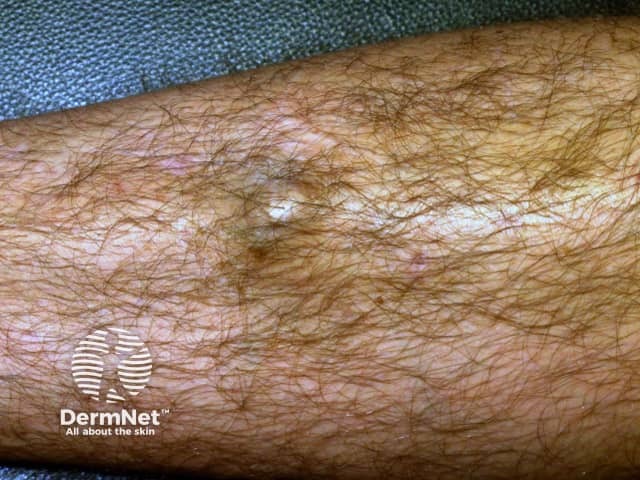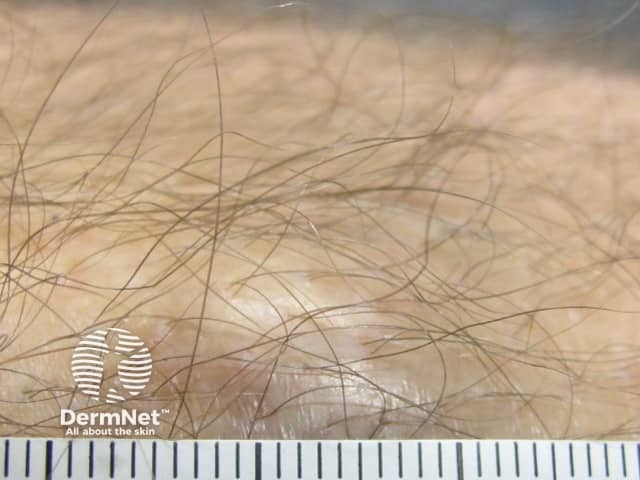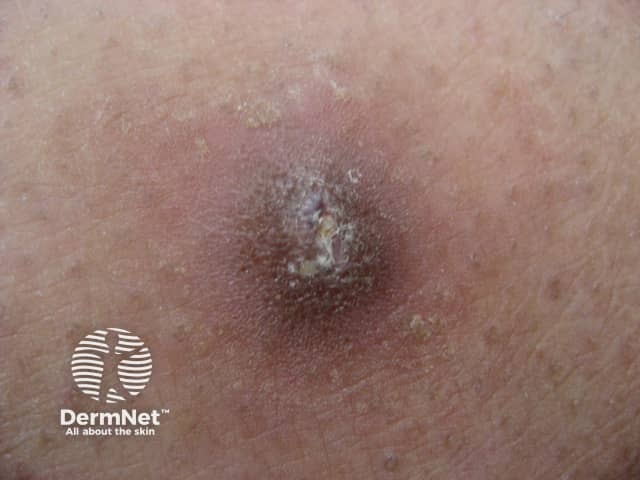Main menu
Common skin conditions

NEWS
Join DermNet PRO
Read more
Quick links
Osteoma cutis — extra information
Osteoma cutis
Author: Tien Ming Lim, Dermatology Registrar, Greenlane Hospital, Auckland, New Zealand, 2012.
Introduction Prevalence Clinical features Causes Differences from calcinosis cutis Diagnosis Treatment
What is osteoma cutis?
Osteoma cutis refers to bone formation within the skin. The bony tissue usually start in a focus of calcification, from an inflammatory scar or granuloma. Osteoma cutis is not cancerous.
Osteoma cutis is one variant of heterotopic bone formation, meaning bone that grows in soft tissue.
How common is osteoma cutis?
Osteoma cutis is rare and does not appear to have any particular racial or sexual predominance. It can occur at any age.
Clinical features of osteoma cutis
Osteomas are frequently small and unnoticed, as they usually occur deep in the dermis or in the subcutaneous tissue. If detected, they feel stone-hard. They may present as single or multiple tumours.
They can develop anywhere but the face, the extremities, the scalp, the digits and the subungual regions are the most commonly affected sites.

Some years after haematoma due to blunt injury

Osteoma cutis some years after haematoma due to blunt injury

Osteoma cutis
What causes osteoma cutis?
The exact reason for bone formation within the skin is not well understood. The process is called osteoblastic metaplasia and is due to dermal fibroblasts changing into the cells that form bone (osteoblasts).
Primary osteoma cutis, meaning it occurs without underlying cause, is rare. At least 80% of lesions are secondary to other conditions and syndromes.
Causes of osteoma cutis |
|
|---|---|
Inflammatory skin disease |
|
Trauma / scar |
|
Tumours |
|
Genetic syndromes |
|
Other |
|
How does osteoma cutis differ from calcinosis cutis?
Calcinosis cutis differs from osteoma cutis as osteoma cutis represents bone formation whereas calcinosis cutis represents calcium salt deposits.
How is osteoma cutis diagnosed?
The diagnosis of osteoma cutis is usually made clinically, as the nodules are bony hard. However, osteoma cutis may be revealed by an X-ray, even when unnoticed by the affected individual.
Serum calcium and parathyroid hormone (PTH) levels can help in identifying Albright hereditary osteodystrophy.
If removed surgically, the biopsy will reveal bone within the skin or fatty tissue.
What is the treatment for osteoma cutis?
The bony nodule may be cut out (excised) or removed by laser ablation, if causing symptoms.
References
- Rooks Textbook of Dermatology
- Osteoma Cutis — Medscape Reference
On DermNet
Other websites
- Inherited Human Diseases of Heterotopic Bone Formation – Medscape Dermatology Education
